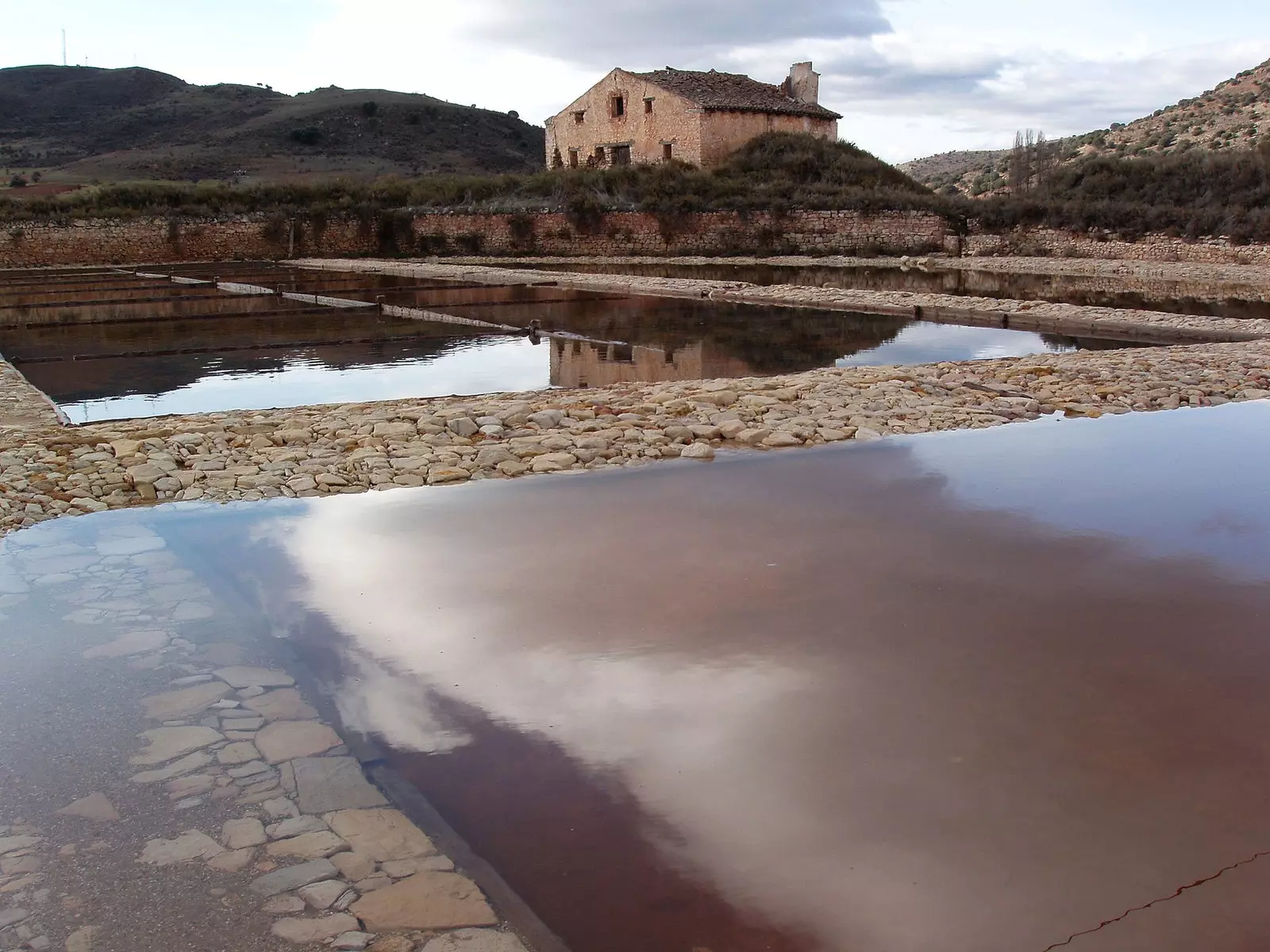
Salinas de Imón, Monument of Cultural Interest, Guadalajara.
We won't find out now Sigüenza as a destination tourist. It is a classic of inland getaways and, along with Medinaceli and El Burgo de Osma, one of the vertices of a magical triangle of historic centres, millenary vestiges and preserved landscapes like few others where it is still possible walk for hours without hearing the noise of an engine.
And all just over an hour and a half from Madrid and just two hours from Zaragoza, which makes it not only an attractive destination in itself, but also a base camp for explore lesser known areas and enter the Serranía de Guadalajara.
We headed north of town, towards the river Salado, going up the variant of the Ruta de la Lana, a thousand-year-old path that joins Levante with the Camino de Santiago, to explore some of the lesser-known towns in the region. We do it from Sigüenza, because it is easy to get here by car, or bring the bicycle on the train, if we want to move comfortably around the area.
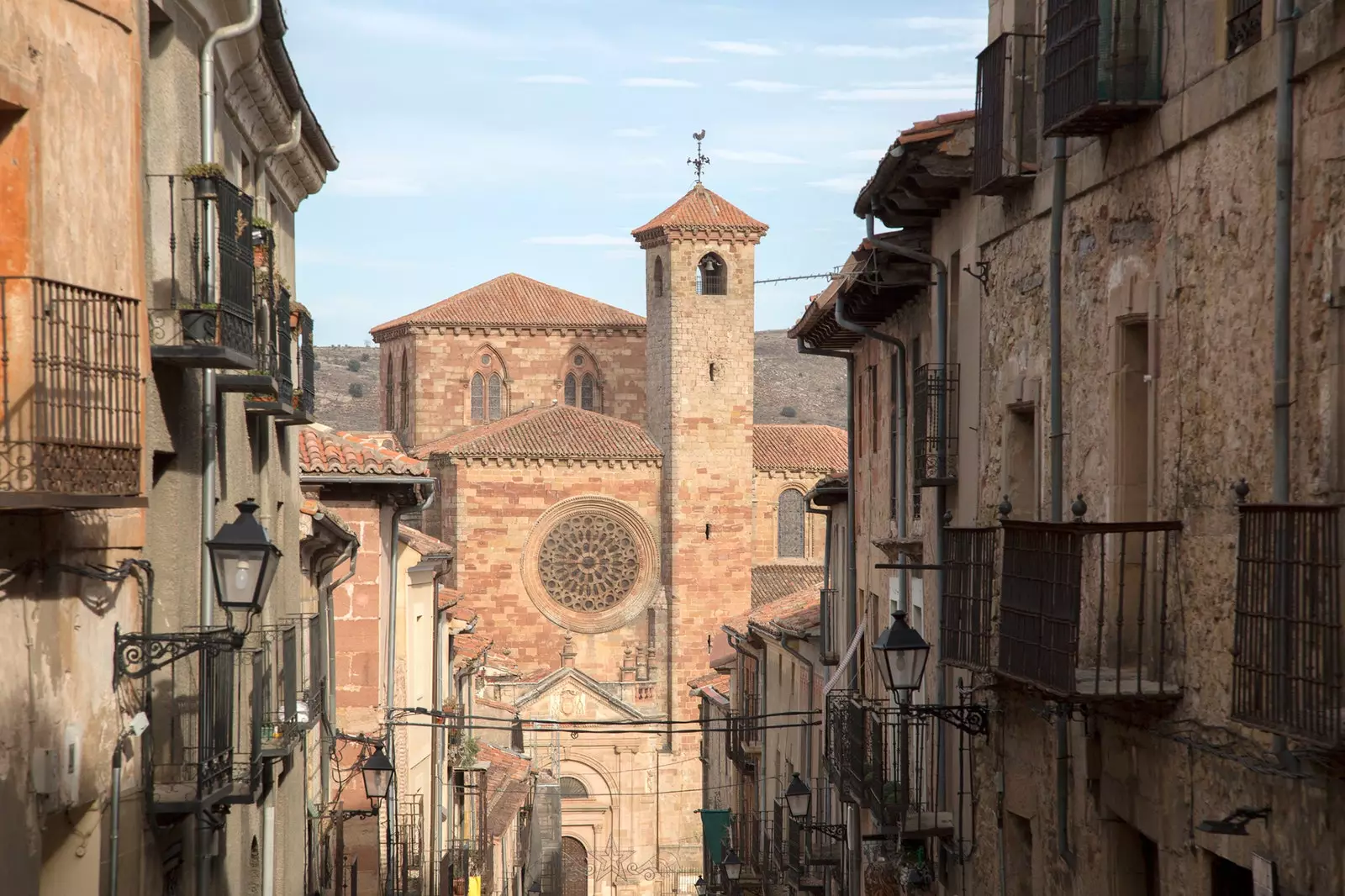
Calle Mayor and Cathedral of Sigüenza.
But we do it, above all, because the most interesting hotel and gastronomic offer is concentrated here from this part of the province. And, if I can choose, if I have to walk the trails, it is better to do it having rested in a place with as much charm as El Molino de Alcuneza, if only because find that tranquility and that pool when you return it is priceless.
Although if we arrive early it would be an unforgivable mistake not to take advantage of have dinner at his restaurant the night before. What better way to immerse yourself in the recipe book of the territory. Maybe there Samuel Moreno and his team will introduce us the breads they make and tell us about Despelta, a Proyect of recovery of native wheats with which it shares efforts, philosophy and together with which it forms part of Raíz Culinaria, a project promoted by the Castilian-Manchego government to spread the value of local gastronomy as a tourist resource.
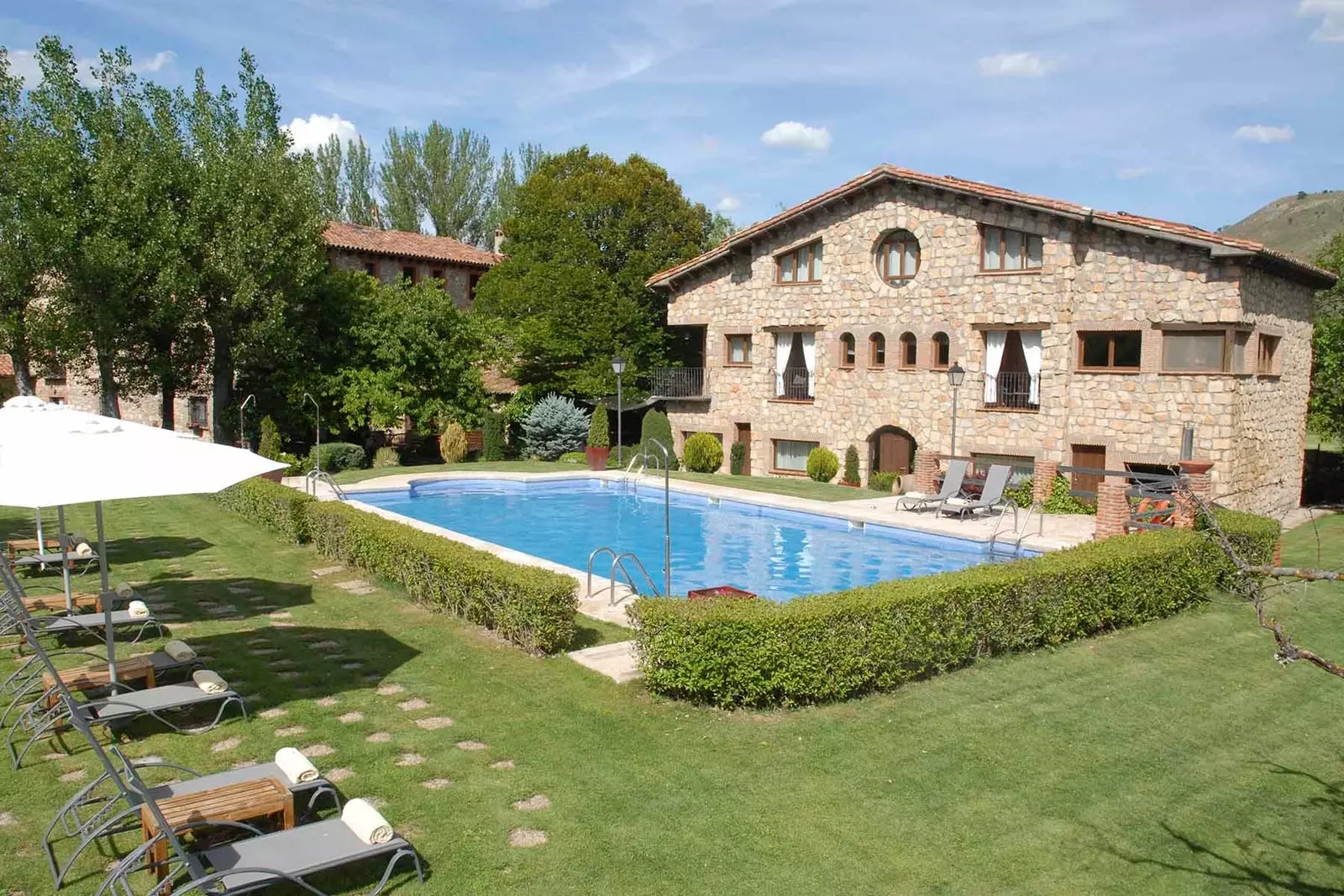
Hotel & Spa Relais & Châteaux Molino de Alcuneza.
That's how I met them. And so I approached the next day to Palazuelos, to that place of Our Lady of Solitude, with the village castle as a backdrop, to discover the work they do with ancestral wheat and his collaborations with chefs.
From here, since we are, it is worth continue north along the old Ruta de la Lana, that fights for its official recognition as a variant of the Camino de Santiago and that, at least in this section, is perfectly signposted and has several rest areas.
The layout of the route leads between wheat fields, lentil and chickpea fields, to the salt flats of La Olmeda and Bujalcayado. Both are private and cannot be visited, although they can be enjoyed from the road. The silhouette of the chapel of La Olmeda silhouetted against the Alto de Valdeabejas at sunset It is one of those gifts that comes along when you least expect it.
We now enter the valley of the Salado River. For centuries it was a communication route used by Romans, Muslims and Christian merchants. And since ancient times it was one of the greatest sources of wealth in the mountains, although the barren landscape seems to indicate that there is little more than dry farming here.
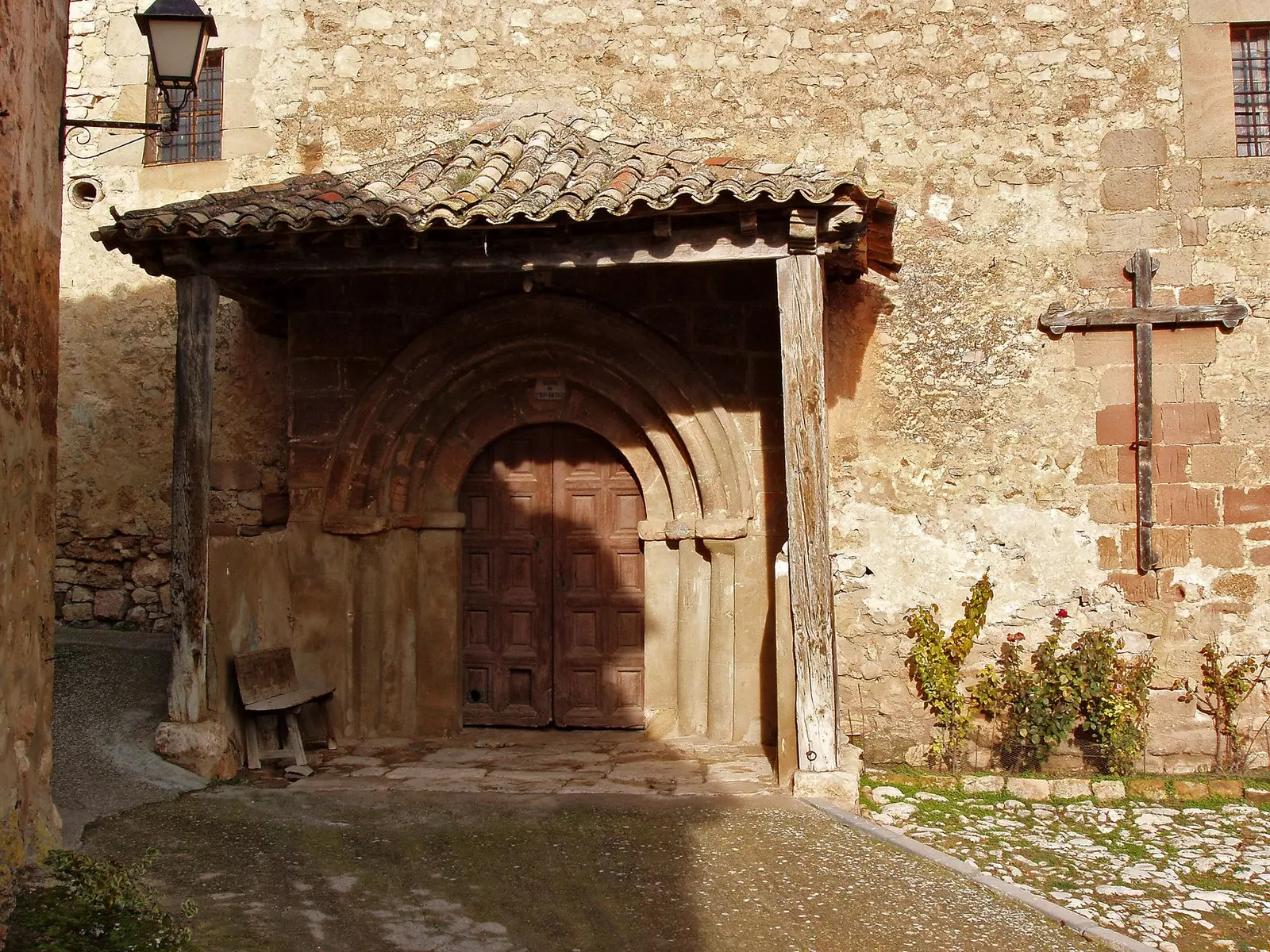
Portico of the Parish Church of San Juan Bautista in the walled town of Palazuelos.
Many people don't know but Salt was the great wealth of all these regions for centuries. The ruins of more than a dozen farms, some medieval, are proof of this. In fact, the monumentality of Sigüenza or the abundance of castles cannot be understood -Palazuelo, Torresaviñán, Pelegrina, Guijosa- without the money that moved around the salt.
Today almost none of the salt mines continue to work, but they continue to dominate ancient landscapes, suspended in time, which are worth exploring. Here and there a real rarity appears: meadows of halophiles, plants that need salty water to be able to live and that are normally associated with marshes and coastal dunes. Here, in the Salado Valley, we can walk among scorzoneras and salicornias, something hard to imagine 300 kilometers from the nearest beach.
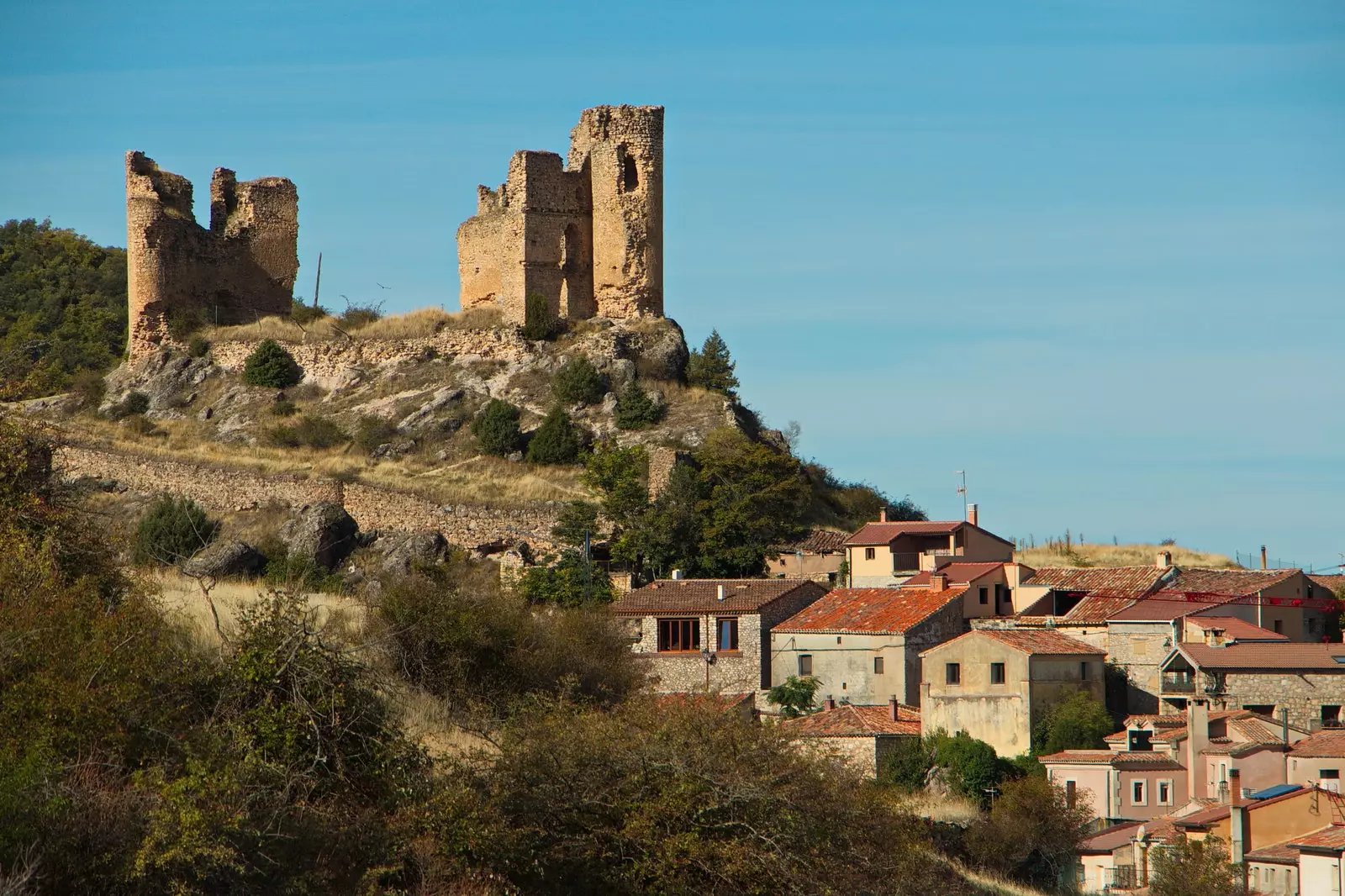
Pellegrina Castle.
From here we can enter the Hoces del Río Salado from Santamera, that is next door, and discover a landscape of ravines and forests in which the silence is only broken by the occasional screech of a bird of prey. Or we can go to Atienza, climb the castle to discover the impressive views and take advantage, going down, to regain strength in the center.
Perhaps a little kid with garlic at the Alfonso VIII, perhaps a field partridge in two cookings in El Mirador de Atienza. Maybe, if it starts to cool down, the spoon dish of the day at Fonda Molinero is a good option.
And back on the road. We skirted the mountains by the salt marshes, towards Paredes de Sigüenza, where there were also salt flats and where the river is born. The hermitage of San Marcos, in Rienda, seems to have been there forever. Going down to the south, the castle of Riba de Santiuste controls the valley from the top, at more than 1,000 meters of altitude.
We return to the Salado, downstream, because the river here has been everything. The roads passed by his side, salt was extracted from its basin. The few pilgrims who cross the region today continue to do so along its banks. And there is Imón, with the largest historical salt flats in the area.
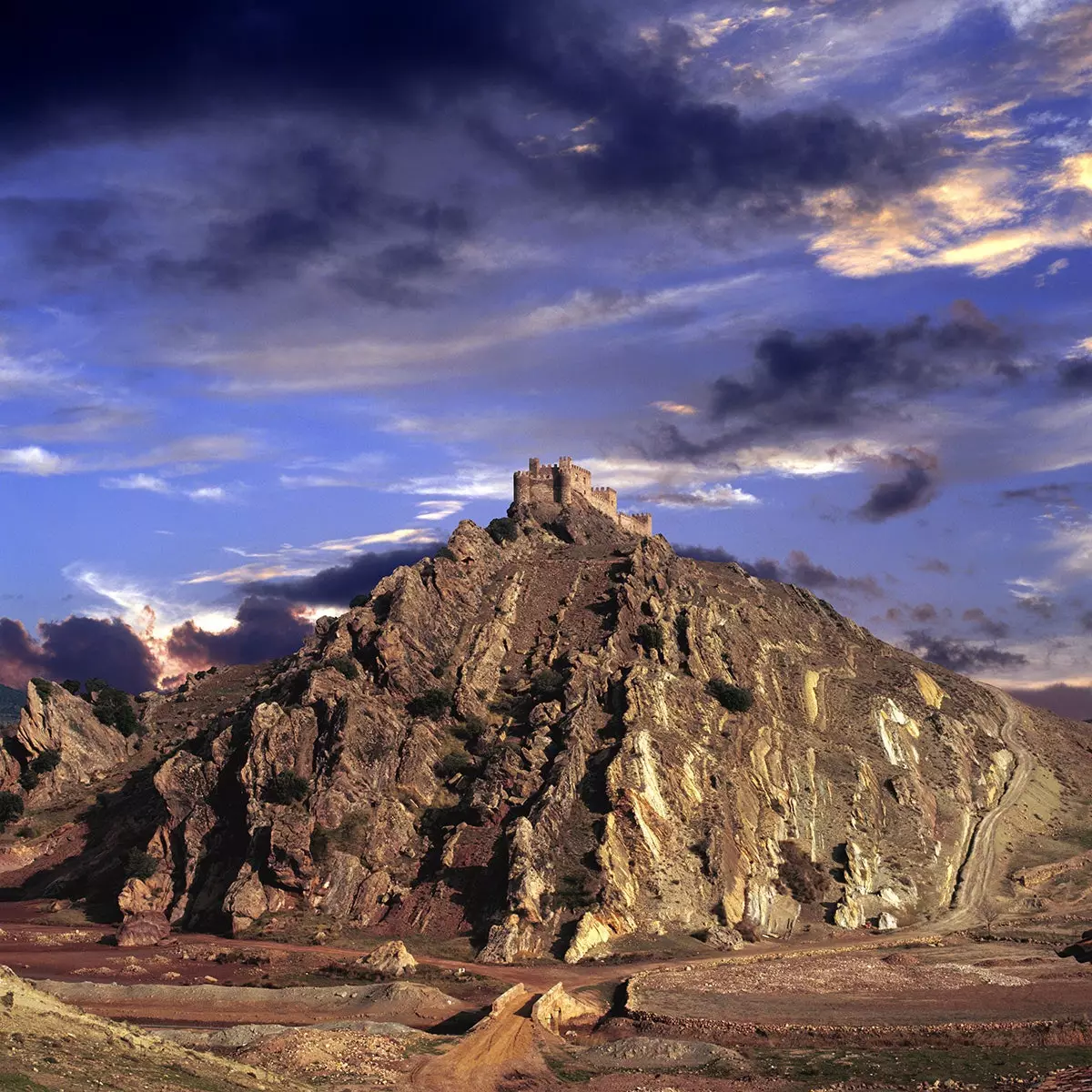
Castle of Riba de Santiuste.
Or, following a few more kilometers, let's go up to Carabias to discover its spectacular church and spend the night at the Hotel Cardamomo. Because having breakfast with those views of the valley justifies any detour. And because from here, tomorrow, we will have a stone's throw from the Barranco del Río Dulce Natural Park with its gorges, its viewpoints and its paths to impossible waterfalls.
Sigüenza is once again within reach, a few minutes of detour. No matter how well known it is, we cannot leave without going back to that main square, without wandering around discovering hidden squares and strolling at the foot of the cathedral. And without eating at El Doncel, before leaving, because few towns of this size treasure as much gastronomic talent as Sigüenza and its surroundings and this house is one of those responsible for that movement. And it would be a shame to miss the chance, that we have come here to enjoy.
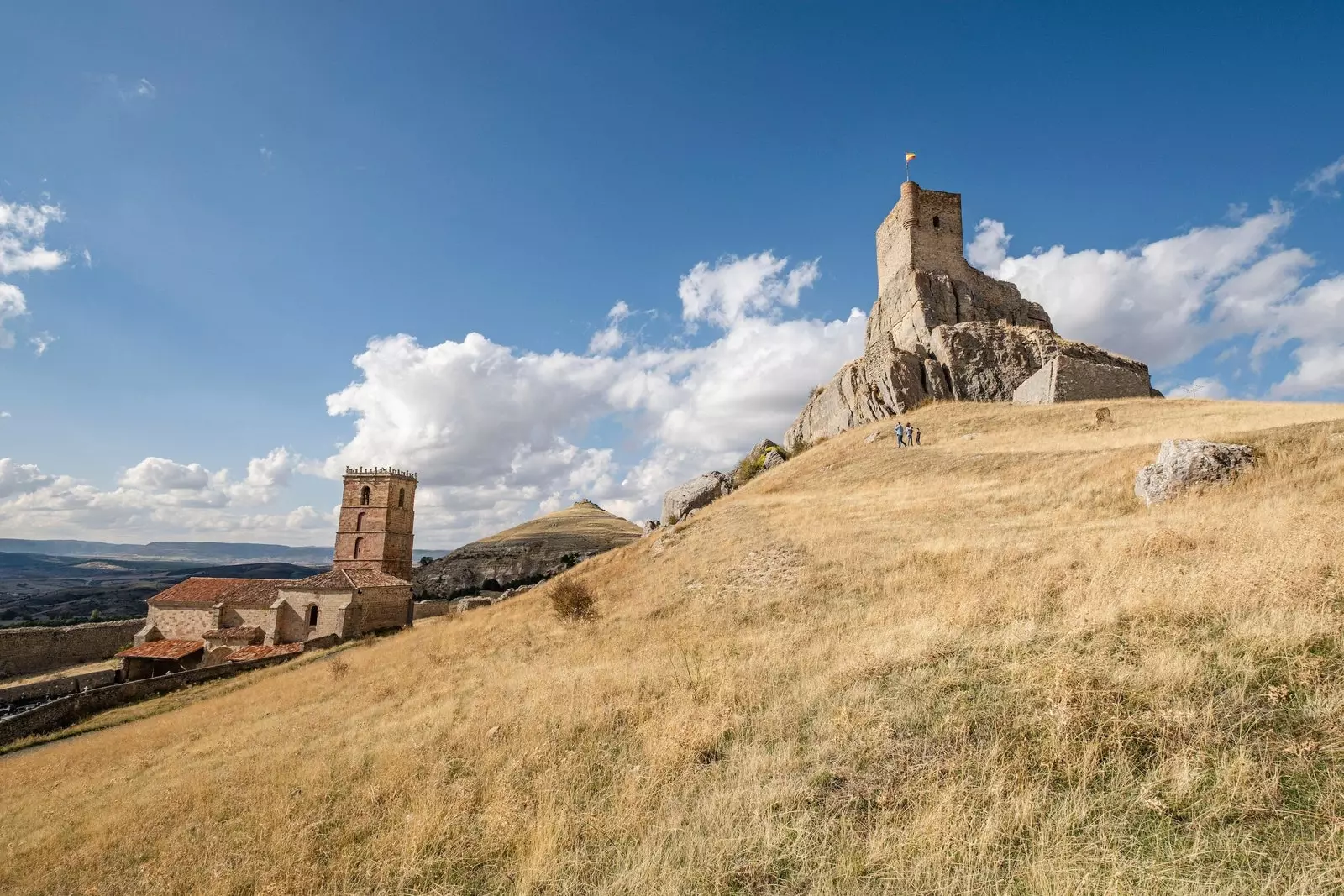
In Atienza, a castle on a rocky outcrop watches over the narrow streets of the tiny town that once had 10,000 inhabitants.
